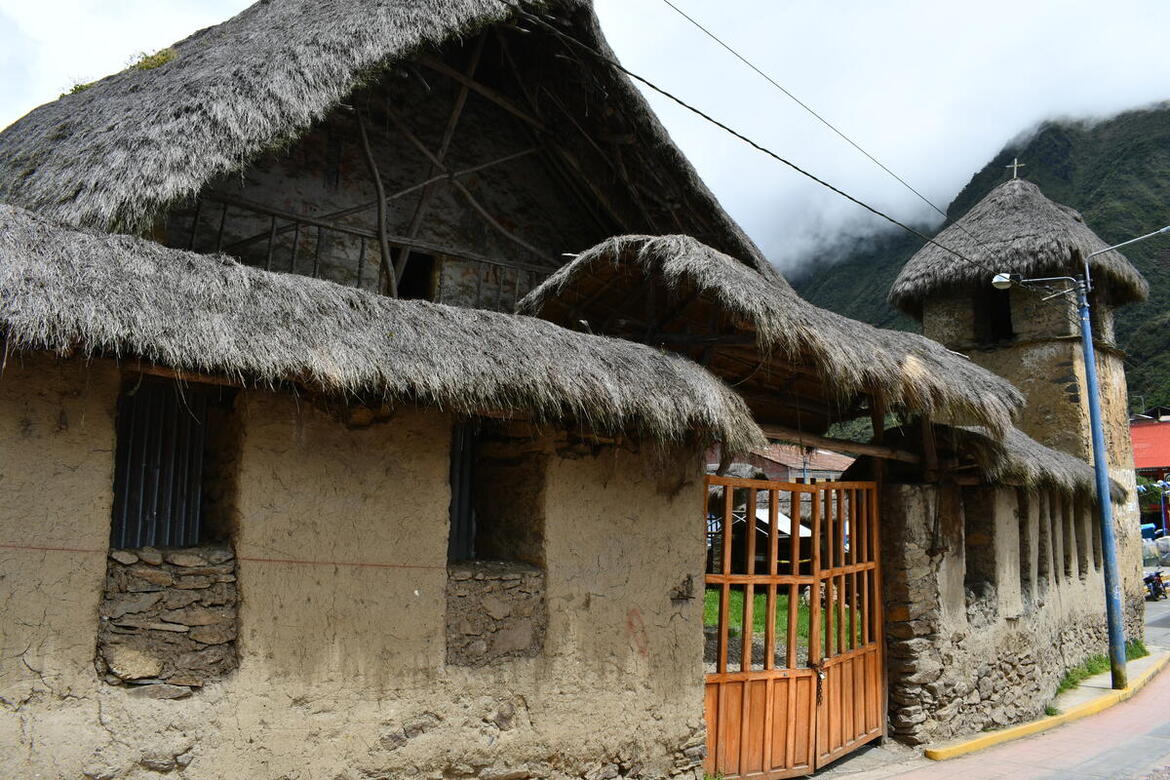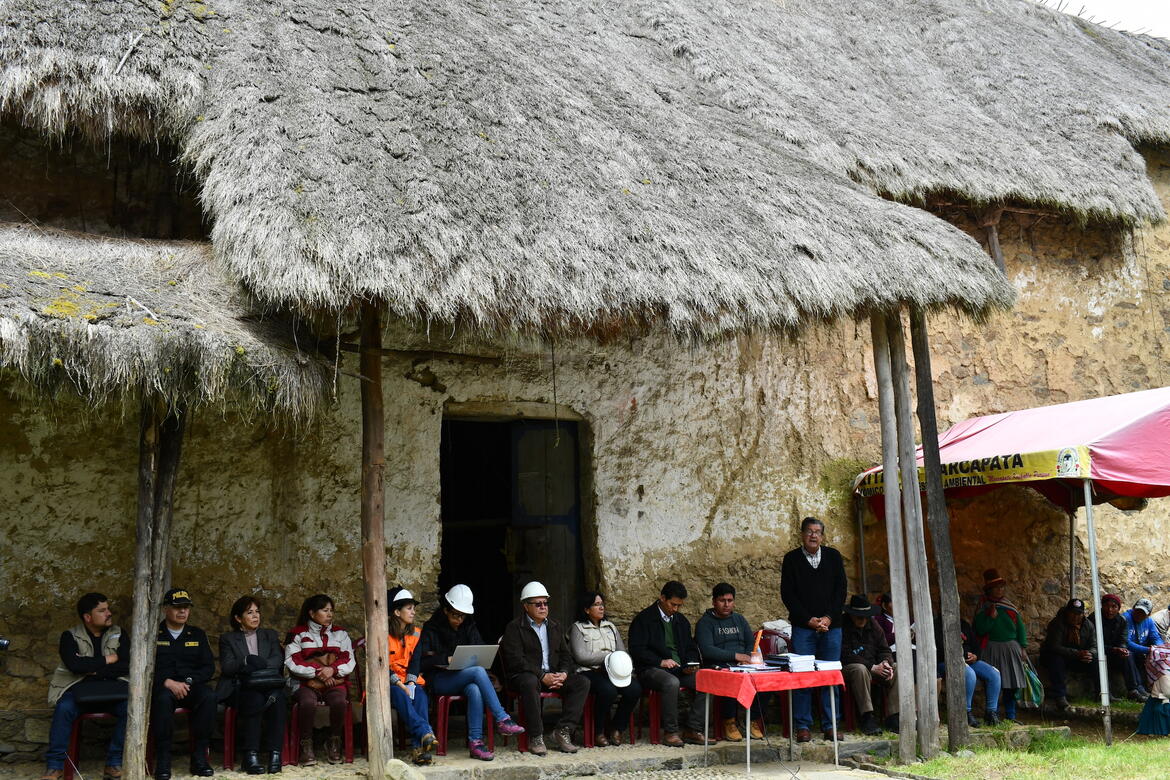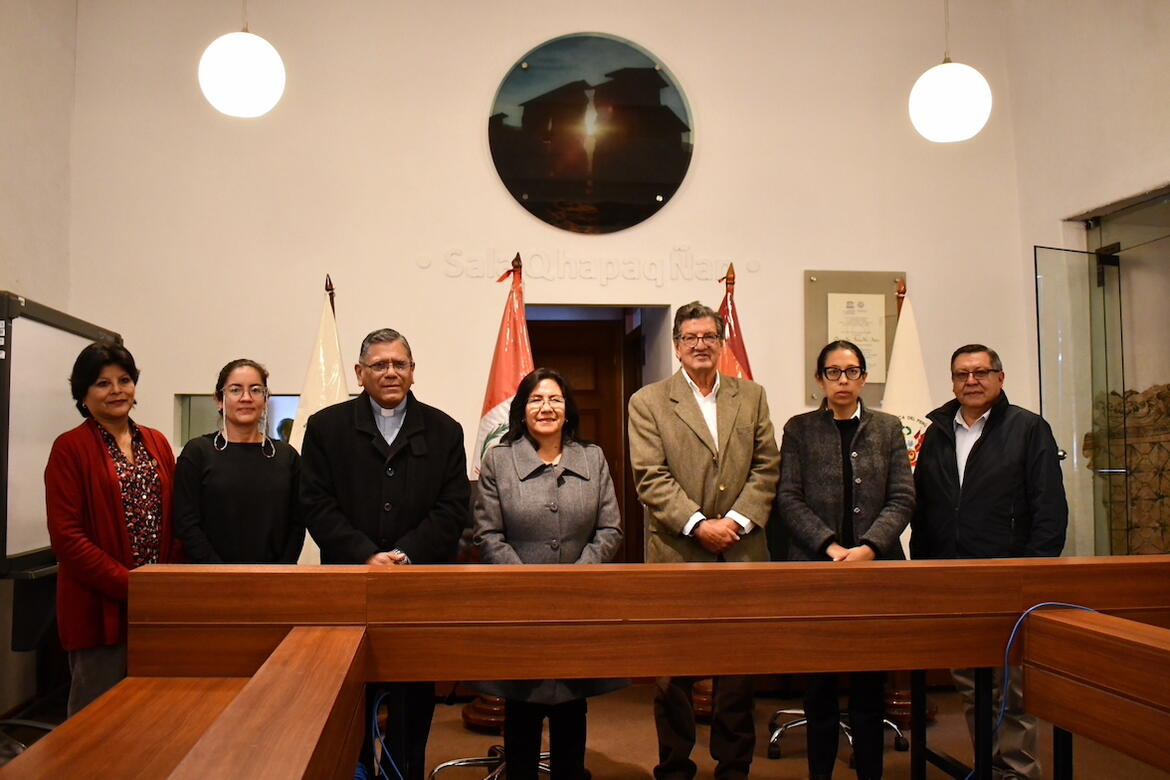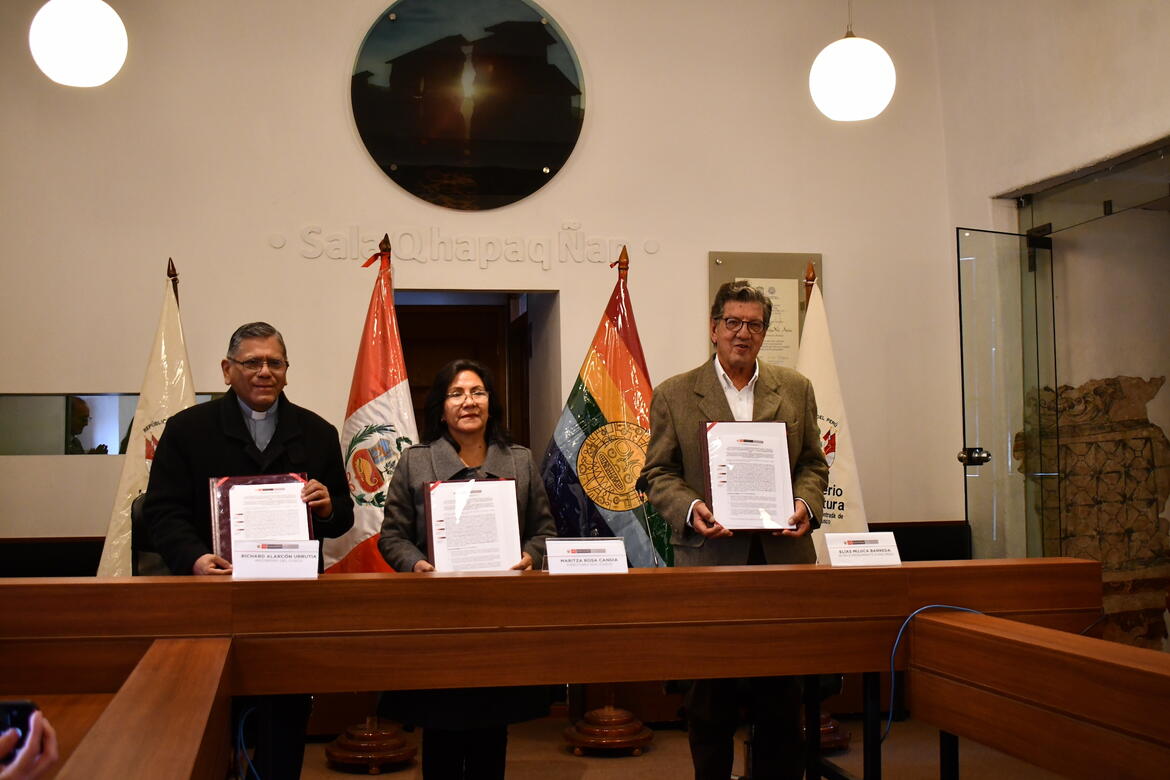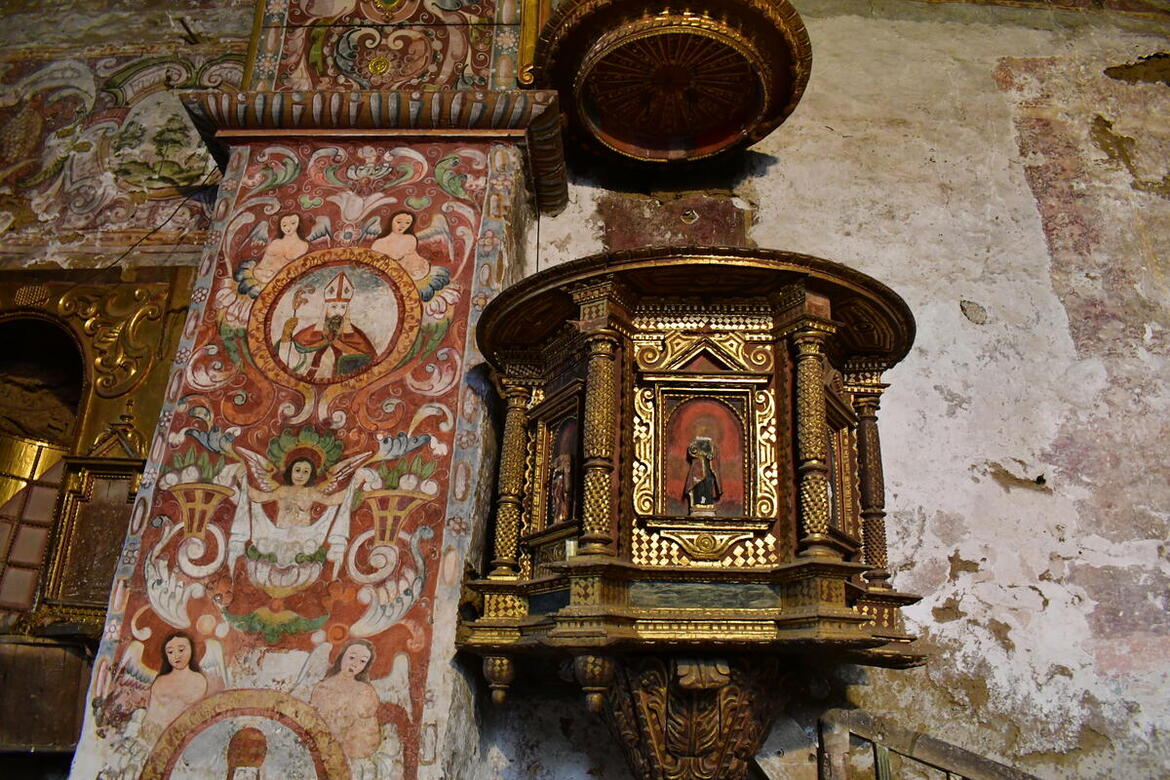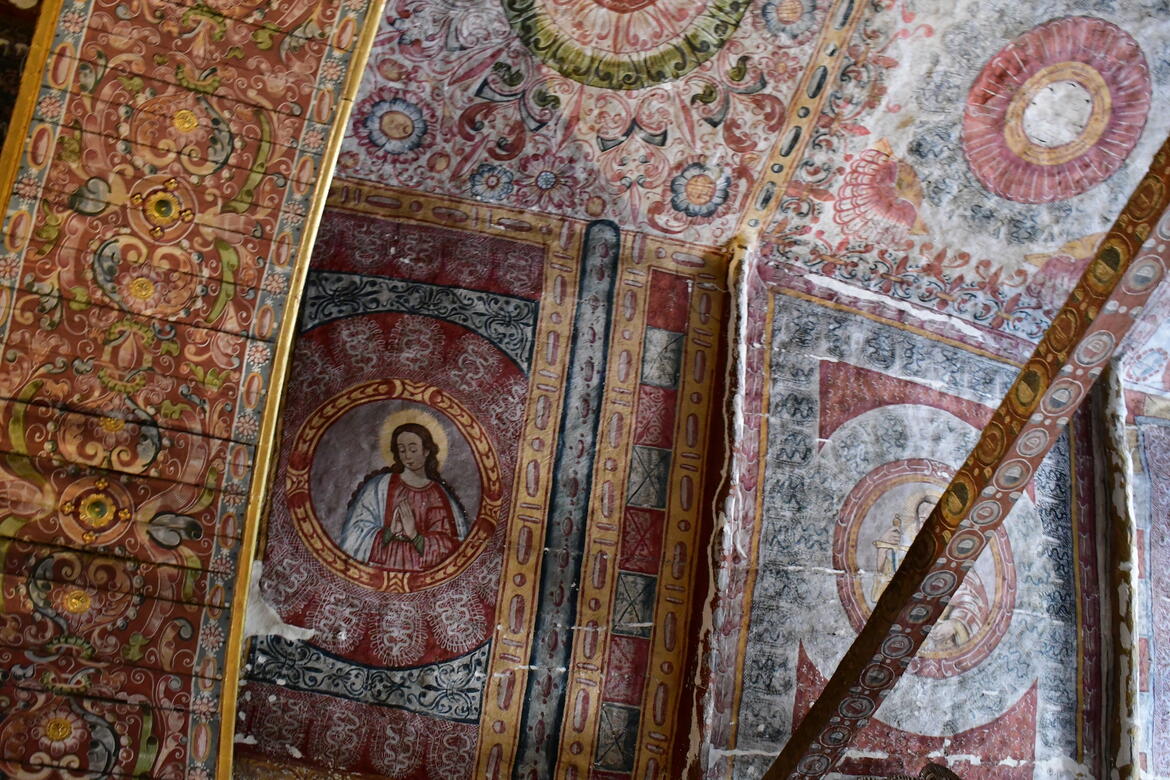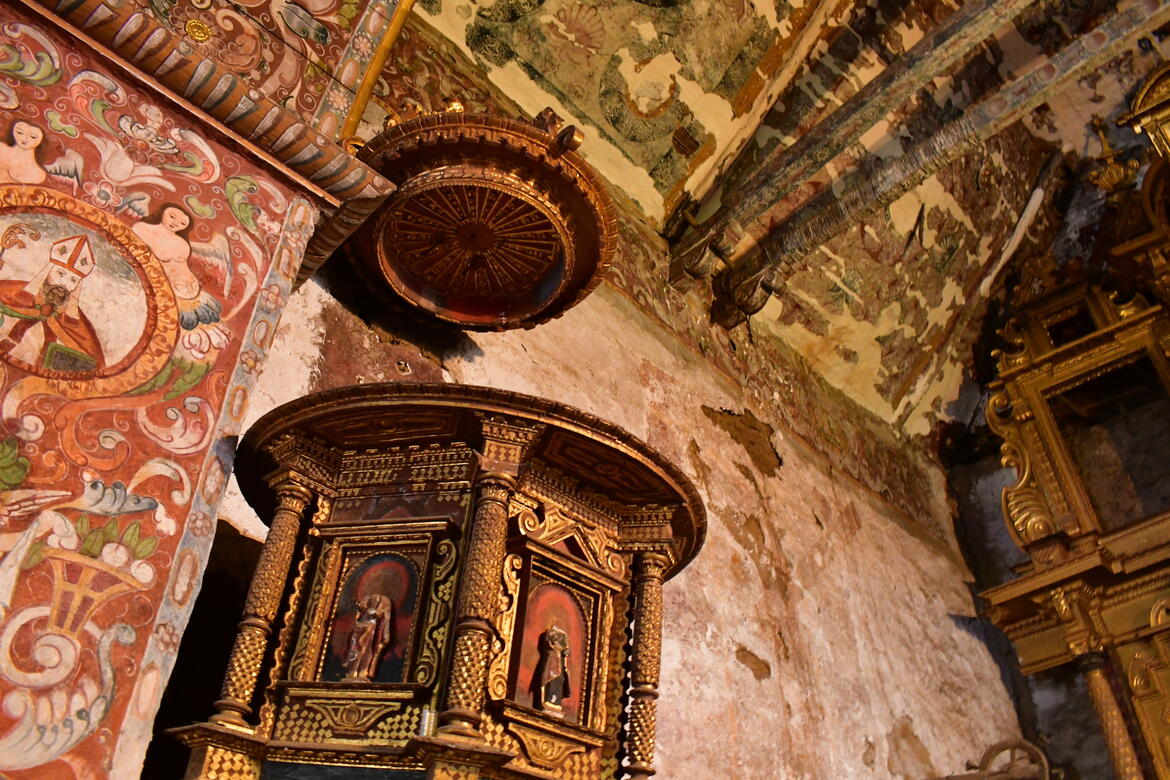A Long Road towards Recovery at San Francisco de Asis de Marcapata, Peru
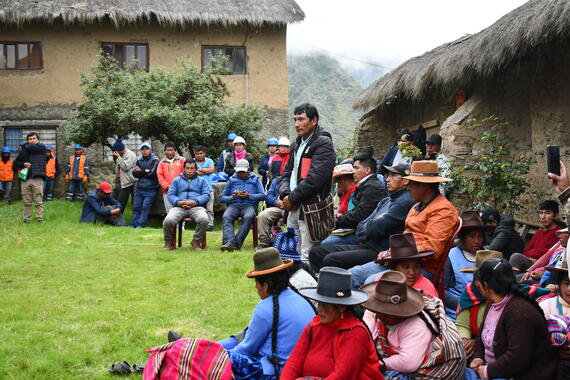
When we arrived at the Andean town of Marcapata after a four-hour journey from Cusco, the green landscapes were full of alpacas grazing under the watchful eye of Ausangate Mountain. There to greet us was a delegation of our project partners’ representatives—and more importantly, a large group of people hailing from the nine communities of the surrounding district. Listening to addresses by local leaders, we realized anew the immensity of the project we were there to observe: the long-awaited restoration of the church of San Francisco de Asís.
In 2010, the church—an excellent example of Andean baroque architecture with a unique thatched roof—was chosen for our Watch program as a way of calling attention to the urgent need to restore it. Of particular note is the centuries-old tradition of replacing the thatch, which is undertaken every four years during a week-long celebration called repaje in Spanish or wasichacuy in Quechua. San Francisco de Asís is part of a set of colonial churches to the south of Cusco known as the Andean Baroque Route, which includes the churches of San Pedro Apóstol de Andahuaylillas and San Juan Bautista de Huaro, both sites of past WMF interventions. By 2017, WMF obtained funding that was complemented with funds from the Archdiocese of Cusco, the Society of Jesus, and the Parishes of Andahuaylillas and Marcapata to begin the technical dossier that would allow for its restoration. The Regional Office of the Ministry of Culture in Cusco (DDC Cusco) also joined the efforts to finalize this essential document, which was approved at the end of 2021.
With work at the site finally resumed after a four-month pause, the World Monuments Fund (WMF) Peru team—had the opportunity to journey to Marcapata to observe how the restoration was proceeding. The welcome ceremony included speeches by Helbert Palma, Mayor of Marcapata; Maritza Rosa, the Director of the DDC Cusco; Father Antonio Sánchez, a representative of the Archdiocese of Cusco; and WMF Peru’s Elías Mujica, as well as community presidents and leaders. Although our lack of knowledge of Quechua, the primary language of the local population, prevented us from understanding the messages in their entirety, we clearly saw the impact of simply touching such an important historical monument and what that meant for these communities. In addition to the demands for community participation for men and women in manual labor at the site, it also became clear that the principal supervisors of the conservation and restoration work would be the communities of Marcapata District.
The next day, we held a meeting at the DDC Cusco offices in the Historical Center to sign a five-year agreement with the Archdiocese of Cusco confirming the commitments of the parties to finally make the church’s restoration a reality. Years of work on the technical dossier, institutional follow-up, and building consensus with local communities will finally come to fruition in the preservation of this cultural heritage site that is a touchstone for all of Cusco’s people.
We salute DDC Cusco for their enormous responsibility in the execution of this project and will make sure that the local communities have a church worthy of the repaje or wasichacuy tradition.
Learn More
World Monuments Fund safeguards cultural heritage around the globe, ensuring our treasured places are preserved for present and future generations.
Sign up for our newsletter to receive regular updates on our projects, stories from the field, upcoming events, and more!
![]()

